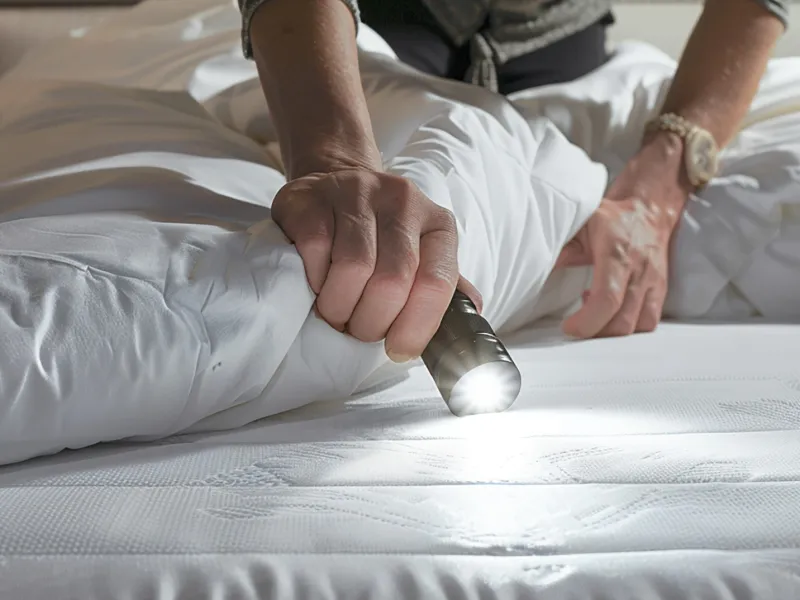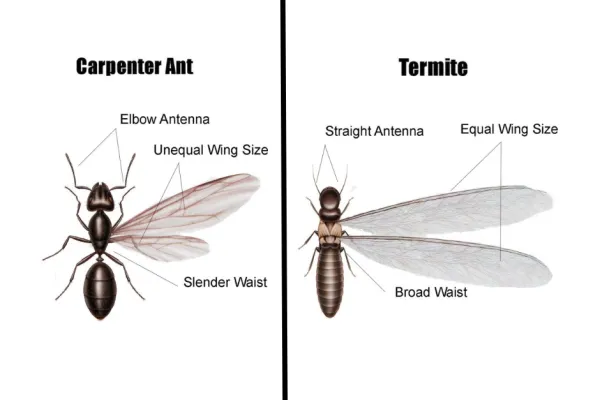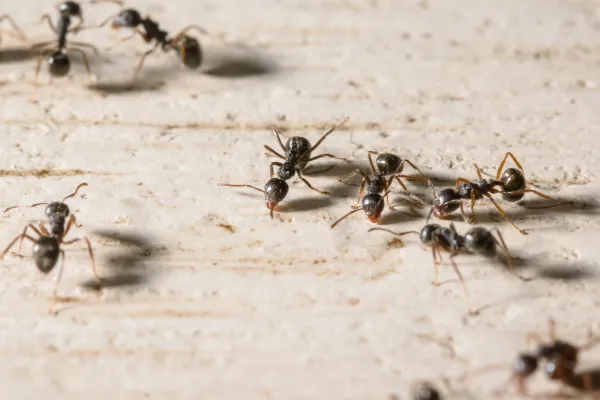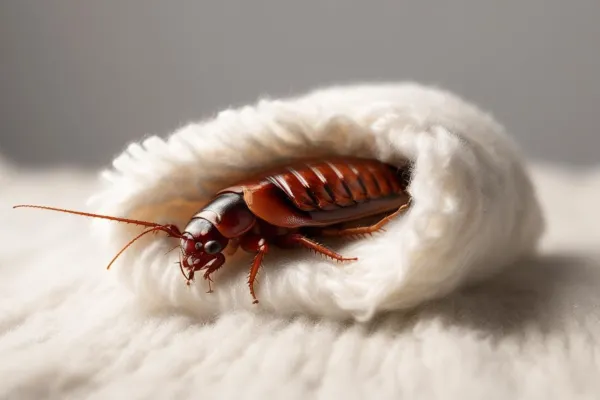5 Ways to Spot Pests in Your Home

Dealing with unwelcome pests at home can be frustrating and worrying. But the sooner you identify an infestation, the quicker you can take action through professional pest control to eliminate the issue. This comprehensive guide covers the top five signs of common household pests to look and listen for, so you can spot problems early and call in the pest control experts.
1. Keep an Eye Out for Live Pests
Have you caught sight of a quick-moving cockroach darting into a hiding spot when you enter a room? This obvious sign confirms roaches have taken up residence. They are mostly active at night but may be seen during the day if the infestation is severe. Seeing a live bed bug crawling on your bed or nearby indicates bed bugs have infested your home. These sneaky nocturnal pests mostly come out at night but can be spotted during daytime pest control inspections of their many hiding places.
In spring, mature termites with wings sprout from the nest to fly off and reproduce. Watch for these winged swarmers emerging indoors from floor or wall cracks or collecting near lights. Seeing swarmers emerge is a clear sign that a sizable active termite colony exists nearby. In many cases, it can be easy to see a trail of worker ants marching single file along baseboards, walls, or near food sources. Ants use these pheromone trails to connect the colony to food and water. See where they originate and terminate to try to pinpoint entry points and locate the nest. Seeing winged ants emerging indoors or congregating by windows indicates a more mature ant colony large enough to produce reproductives. Watch where they emerge from closely to find the hidden nest and contact pest control experts if you need assistance.
2. Watch for Droppings
Mouse and rat droppings are one of the clearest giveaways of a mouse or rat infestation. In our experience, Mouse droppings are about the size of a grain of rice, while rat droppings are larger, around a half-inch long. Be on the lookout for small piles of these droppings in cupboards, along baseboards, and in the garage or attic. Fresh droppings indicate an active rodent infestation is present.
Bed bugs leave dark ink-colored stains on walls, mattresses, furniture, bedding and curtains from their dried excrement. While these aren't droppings per se, they still come from droppings. Heavy infestations result in many black or rusty spots in their main activity areas. These can bleed onto fabric and are difficult to remove.
3. Look Out for Discarded Bug Parts or Eggs
Once termite swarmers find a mate, they break off their wings and locate a nesting spot. Look for piles of small discarded termite wings around windows, door frames, spider webs, or along the foundation as evidence of swarming activity in your home. The wings are very delicate and resemble tiny insect wings.
As cockroaches grow, they shed their exoskeletons, leaving behind hollow, pale brown skins. These cast skins may accumulate in infested areas like cabinets, closets, or under appliances. A large number indicates a well-established roach population. Female cockroaches carry capsule-shaped egg casings protruding from their backsides until the eggs hatch. These brown, purse-shaped casings get left behind in clusters where females prepare them. If you find egg casings, a roach population is actively breeding in your home.
Like other insects, bed bugs molt and shed clear, empty skins as they grow. You may find piles of these skins or cream-to-yellowish eggs in mattress seams, headboards, furniture joints, curtains, or cracks and crevices nearby. Each tiny egg is about the size of a speck of dust.
4. Take Note of Unusual Odors or Sounds
Those pitter-patter sounds in walls or ceilings may not just be wind or creaky pipes. Listen closely for scurrying or squeaking sounds that could indicate active rodents, especially at night when they are most active. Rats tend to be louder than mice given their larger size. Persistent scratching and thumping coming from inside cabinets, walls, or the attic is also a giveaway.
The scent of cockroaches has been described as musty, oily, or greasy. This distinct odor comes from a secretion they produce. Any area with a strong roach smell likely harbors an infestation. Trust your nose if you pick up this unpleasant scent.
Bed bugs release pheromones that give off a sickly sweet, musty odor often described as similar to coriander or berries. The smell is more apparent in severe infestations. Any area where you notice this unusual odor likely has bed bugs.
5. Pay Attention to Damage or Blemishes Telltale Signs of Bed Bugs
Mice and rats love to chew through materials to gain entry and access food. Look for gnaw marks or small holes chewed into boxes, furniture, drywall, wood, cables, and other household items. Their sharp teeth make surprisingly clean cuts. We've seen that rats gnaw holes around one to two inches wide due to their larger size when compared to mice.
Tap on exposed wood surfaces and listen for a hollow tunneling sound indicating termites are, or have been, feeding inside. Infested wood will also be very lightweight if extensive interior damage exists. Look for tiny pinholes in painted wood where they push out sawdust-like pellets from the hollowed galleries.
Carpenter ants leave behind sawdust-like debris called frass, which is essentially chewed-up wood. Look for scattered piles of this wood-colored debris below or near small openings to their galleries inside the wood. Some ant species push excavated soil into dirt mounds or piles near entry holes to their underground nests. Large amounts of fine dirt around baseboards or under floors means ants are active.
You can also look for damage to items around your home. Drywood termites often infest wood in structures and feed on items high in cellulose like books, papers, photo frames, and furniture. Carefully examine these items for tiny holes, sawdust, peeled laminate, or other damage indicating termite activity.
Besides signs of damage, you may also notice blemishes on different items around the home. After feeding on blood, bed bugs leave behind telltale blood spots on bedding. These round, red to brownish dried blood stains may be found on sheets, mattress covers, pillowcases, and pajamas. Fresh blood smears or droplets may also be seen on walls or furniture near the bed from crushing recently fed bugs.
The oils and dirt on rodent fur leave behind greasy rub marks along their frequently traveled paths. Look for these streaks or smudges on pipes, walls, rafters, and other narrow spaces they squeeze through. Fresh grease marks mean rodents are still actively moving about your home. According to the United States Census Bureau, residents of over 14 million housing units saw rodents in their homes between April 2020 and 2021. With how common rodents are in American homes, you must be able to notice signs of rodents actively infesting your home.
Dealing with any pests at home can be extremely frustrating. Thankfully, professional pest control experts have the cutting-edge tools, knowledge, and experience to assess your infestation and implement solutions to eliminate the problem at its source. Rely on pest control pros to handle your issue in a prompt, effective, and affordable manner. Call Mares Exterminating today if you're ready to remove pests from your home once and for all.



